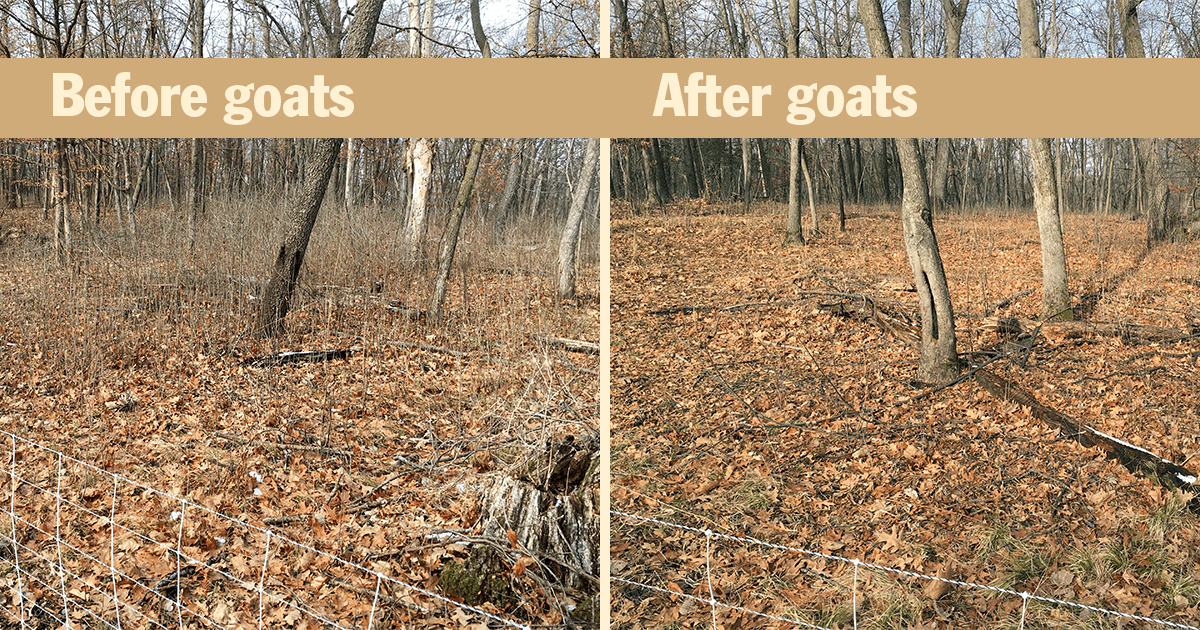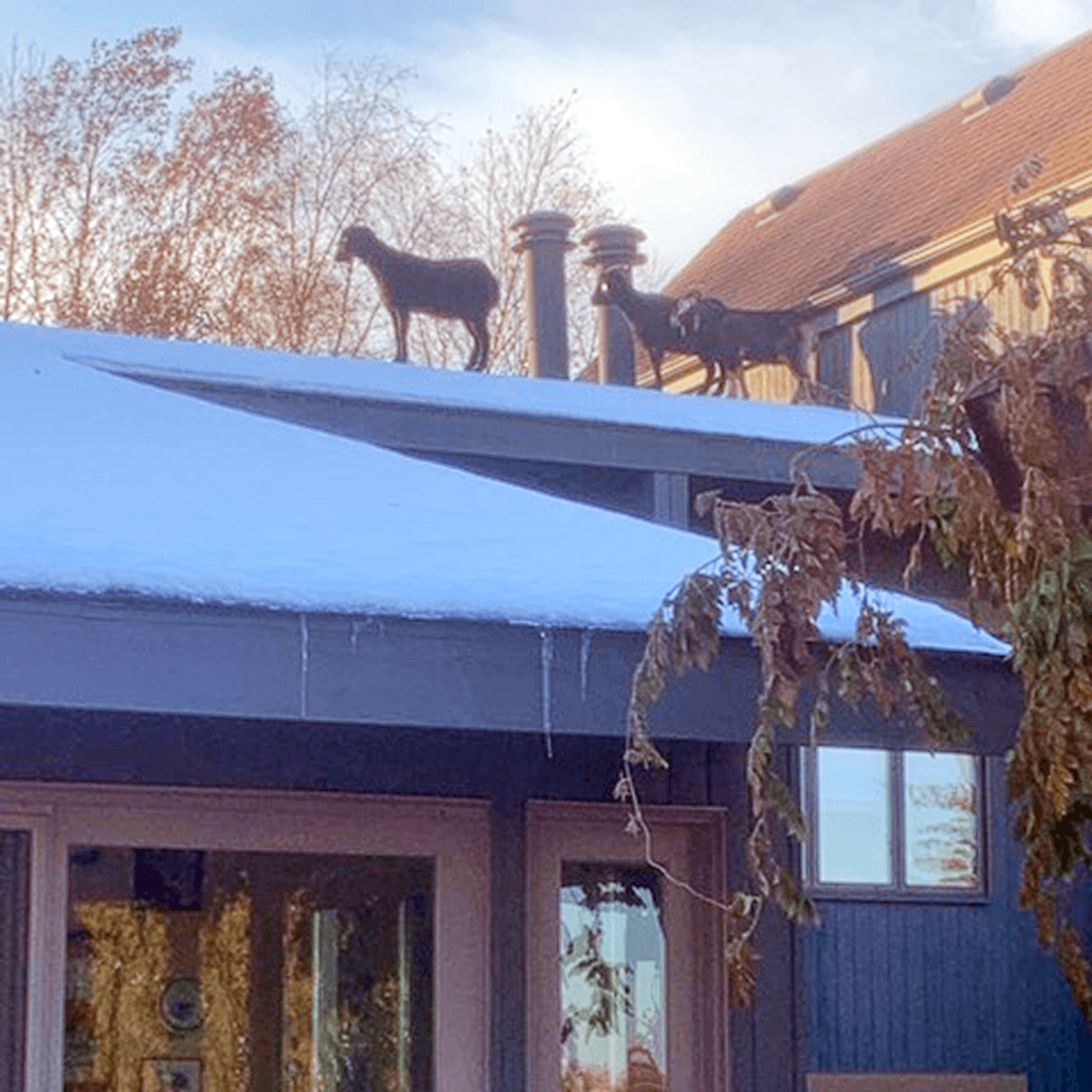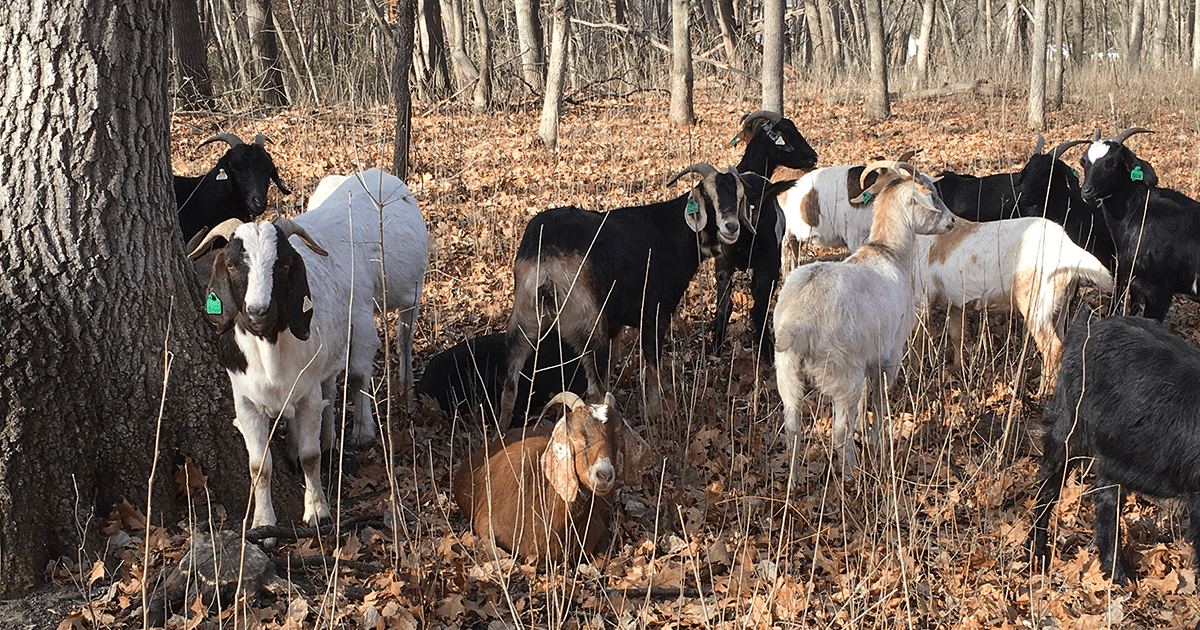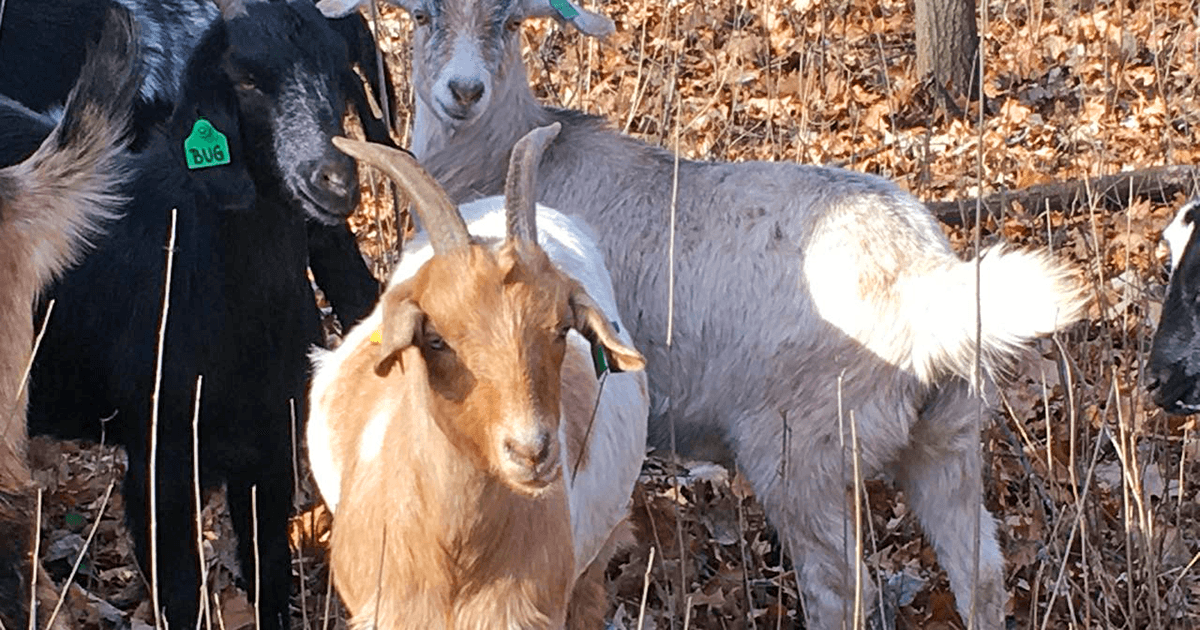Invasives got your goat? Here's one way we're bucking buckthorn at Hampton Woods
In late October, a young and energetic crew arrived at Hampton Woods Wildlife Management Area to work on buckthorn control. They wasted no time and dove right in — eating buckthorn.
Entertaining and adorable as they are, goats have found a serious and fitting profession in the ecological management world: consuming as much buckthorn and other invasive woody plants as possible. We were excited to welcome these hungry coworkers to the largest contiguous oak forest in Dakota County, Hampton Woods Wildlife Management Area, which we helped permanently protect in 2017 and are now working to restore.
How browsing goats fit into our habitat restoration plan at Hampton Woods
We're experimenting with winter browsing in the north end of the management area at Hampton Woods. With little else to eat in winter, goats will strip the bark off of larger buckthorn shrubs and browse stems of smaller plants. Browsing in winter will have the least impact on the desirable native woodland plants that we want to support. And while the goats won't get rid of the buckthorn entirely, browsing will weaken the plants, allowing us to use less herbicides to finish the job later.
Here's a snapshot of their progress:

On the left, you can see a thicket of tall buckthorn stems prior to goat release. On the right, see the goat crew's results.
Goats work best when they're brought in multiple times and when they can browse intensively. We plan to have the goats return in fall 2021, followed by later herbicide of new growth to treat the remaining stems.
At Hampton Woods, a small crew of seven goats, owned and managed by Goat Dispatch, got things started. This was an older, more experienced group, and as it turned out, just a wee bit naughty.
Hoofs to the roof
Electric fencing keeps the goats in the right area. Such fences naturally interfere with the normal traffic patterns of deer. Deer can readily jump over them, but they may also just run through it. When that happens, the goats can get out.
And get out they did! The goat herders were quick to bring them back, but at Hampton Woods, the return route brought the goats right past a temptation they could not pass up — a house with a roof that sloped to just a few feet off the ground. One look at that and they were off, leaping on the roof and up to the peak, climbing that mountain just the way goats are meant to.

After this mischief, we had no more problems with our group. Up to 70 goats were in the 5-acre unit, but most of the time it was a smaller group of 15.
Are goats the best way to remove buckthorn?
In the ongoing pursuit of buckthorn eradication, land managers are trying many different methods, exactly none of which are proving to be the one way to achieve the goal. Not only is every site is different, but it sometimes seems like every individual buckthorn plant responds differently to removal efforts.
The bottom line is that there's no single best way to eradicate buckthorn. There are, however, many different tools. FMR continues to experiment with various methods and strategies at our many restoration sites (including at Hampton Woods).
Years ago, we experimented with goat browsing to control buckthorn at two of our restoration project sites, repeating the method for three consecutive years. In our experience, the buckthorn did return to pre-browsing levels within about two years, but areas with dense shade had much lower amounts of buckthorn even four years later.
Buckthorn does not grow well in dense shade, so the more shady a site is, the more likely buckthorn will not survive browsing. In very open sunny areas, on the other hand, browsing may have little effect.
Goats have gotten a lot of attention since our first attempts with them, for good reason. But it's important to know what they can and can't accomplish.
What goats do best
Goats love to eat just about anything, and buckthorn is no exception. They tend to dine on leaves and small growth so they mostly affect smaller buckthorn plants; they can’t reach the leaves of larger plants, although they may strip the bark in the winter. They also love buckthorn berries, which would be cause for concern except that recent studies show most of the seeds do not germinate after passing through their guts. (Unfortunately, the same can't be said for buckthorn berries eaten by birds.)
All of that is good, but simply removing the leaves and small stems from most woody plants doesn't kill a very hardy species like buckthorn. After being browsed once, the leaves will grow back. If nothing else happens, the whole plant will merrily grow back and forget all about their brush with goats.
Timing is everything
At a really degraded site, goats might be able to see the job through, browsing for multiple summers in a row. But for most restoration projects, that would mean desirable native plants would also be on the menu.
At woodland sites where we want to encourage native vegetation, most native plants start to die back by late summer and early fall, while buckthorn is still growing. That makes this season a particularly good time to browse the buckthorn and, returning annually for several years, goats can significantly set the buckthorn back. Browsing twice in one season is even more effective.
One way to use goats that seems most promising is after removing large buckthorn plants through other methods, then having goats browse the flush of new seedlings a year or two later.
Even so, browsing is likely to reduce only a percentage of the buckthorn. In most cases, it's a tool to reduce the size and abundance of buckthorn and to greatly reduce the amount of herbicide needed to kill the plants. Post-goats, contractors can often daub herbicide onto individual remaining buckthorn plants, in keeping with our goal of minimizing herbicide use as much as possible.
Because herbicides are designed to kill plants, there can be non-target impacts, so we want to minimize their use as much as possible.
Help us bust buckthorn
Goat browsing won't work in every situation but can be a very useful tool in the buckthorn battle. One of our favorite ways to get rid of buckthorn is by hand with river stewards.
If you'd like to help remove buckthorn and other invasive plants to restore habitat (no browsing required), we have plenty of human-powered events spring-fall! Events are also announced in our twice-monthly Mississippi Messages e-newsletters.

Do goats get a lunchbreak? Just kidding.
